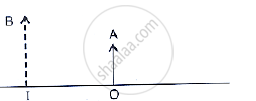Advertisements
Advertisements
Question
A beam of parallel light rays is incident through the holes on one side of a box and emerges out through the holes on its opposite side as shown in the diagram below:
Which of the following could be inside the box?
(a) a rectangular glass block
(b) a concave lens
(c) a convex lens
(d) a glass prism
Solution
a convex lens
The beam of light is converging when it is coming out of the box; therefore, there should be a convex lens inside the box.
APPEARS IN
RELATED QUESTIONS
An object is placed at a distance of 15 cm from a convex lens of focal length 20 cm. List four characteristics (nature, position, etc.) of the image formed by the lens.
When a ray of light enters from one medium to another having different optical densities it bends. Why does this phenomenon occur?
Complete the following table:
| Instrument | Number of Convex Lenses |
Use |
| Simple Microscope | .............. | .............. |
| Compound Microscope | .............. | .............. |
| Telescope | .............. | .............. |
Describe with the help of a ray-diagram, the formation of image of a finite object placed in front of convex lens between f and 2f. Give two characteristics of the image so formed.
List some things that convex lens and concave mirror have in common.
What kind of lens can form:
an inverted diminished image?
Which causes more bending (or more refraction) of light rays passing through it : a convex lens of long focal length or a convex lens of short focal length?
The given below figure shows an object OA and its image IB formed by a lens
. 
draw suitable rays to locate the lens and its focus.
In the following cases, where must an object be placed in front of a convex lens so that the image formed is inverted and enlarged?
State two applications of a convex lens.
